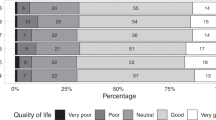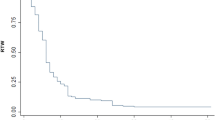Abstract
While our understanding of aging and mortality in spinal cord injury is evolving, precise estimates are still not available for expectations of life and health following a spinal cord injury. In order to derive these estimates, information about mortality and health must be combined into a single estimate. Health expectancy estimates have been widely used in the literature of the last decade to try to understand the relationship between population health and survival, both in the general population and in special populations. This study brought the benefit of this methodology to the question of long-term survival following spinal cord injury. Specifically, the study aimed to calculate life and health expectancy in a population of spinal cord injured individuals; and, to estimate the effect of factors associated with survival and health. The study involved a retrospective cohort, all of whom sustained a spinal cord injury between the ages of 25 and 34 years, and between 1945 and 1990. The study predicted a median survival time of 38 years post-injury, with 43% surviving at least 40 years. These findings suggest an increase in life expectancy of about 5 years over previous research on the same cohort.1 Factors affecting survival were age at injury, level and completeness of lesion. Expectations of health found in the present study are similar to those found in studies of the general population.2 This study showed seven remaining years of poor health expected at injury, and five remaining years expected at 40 years post injury, presumably occurring at the end of life.
Similar content being viewed by others
Log in or create a free account to read this content
Gain free access to this article, as well as selected content from this journal and more on nature.com
or
Author information
Authors and Affiliations
Rights and permissions
About this article
Cite this article
McColl, M., Walker, J., Stirling, P. et al. Expectations of life and health among spinal cord injured adults. Spinal Cord 35, 818–828 (1997). https://doi.org/10.1038/sj.sc.3100546
Issue date:
DOI: https://doi.org/10.1038/sj.sc.3100546
Keywords
This article is cited by
-
Predicting physical activity intensity using raw accelerometer signals in manual wheelchair users with spinal cord injury
Spinal Cord (2022)
-
Life expectancy after spinal cord injury: a 50-year study
Spinal Cord (2012)
-
Predictive factors of long-term mortality of persons with tetraplegic spinal cord injury: an 11-year French prospective study
Spinal Cord (2011)
-
The pattern of colorectal dysfunction changes with time since spinal cord injury
Spinal Cord (2008)
-
Incidence, prevalence and epidemiology of spinal cord injury: what learns a worldwide literature survey?
Spinal Cord (2006)



